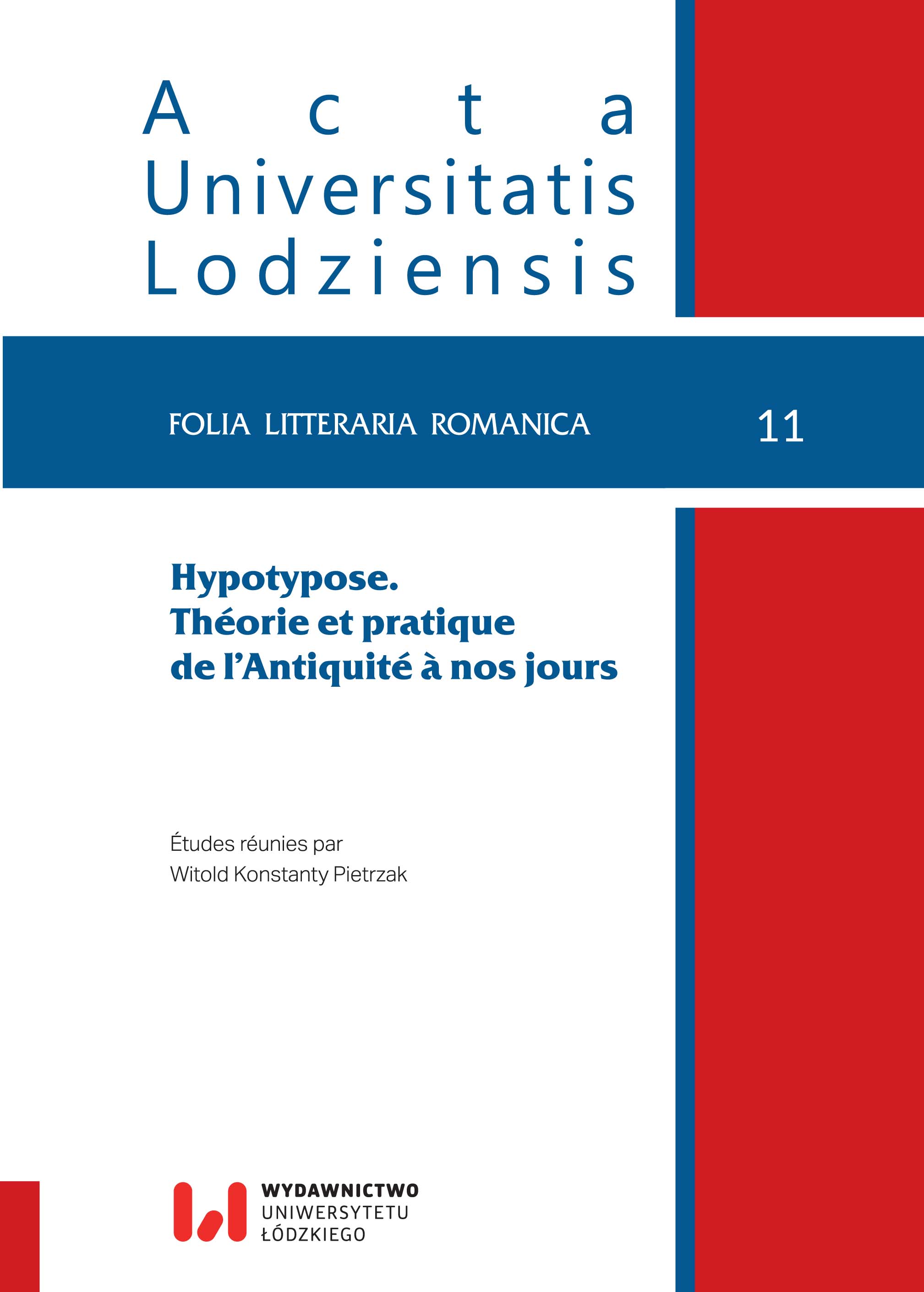L’hypotypose dans les Métamorphoses d’Ovide
Hypotyposis in Ovid’s Metamorphoses
Author(s): Magdalena KoźlukSubject(s): Studies of Literature
Published by: Wydawnictwo Uniwersytetu Łódzkiego
Keywords: transformation; human body; anatomy; hypotyposis; blood; rhetoric; Ovid
Summary/Abstract: Ovid’s Metamorphoses are an excellent text for the study of figures of speech, and in particular over hypotyposis (euidentia). Often hypotyposis, occurring in the company of other figures (enumeratio, accumulare res, comparatio, gradatio), plays a unique role in ovidian narrative form, especially at the key time of change – metamorphosis, which is the passage of one being to another. This article has traced mainly fragments that accurately (perspicuitas) and convincingly (persuasio) show the change of the human body, from the point of view of physiognomy and anatomy. Stories of Daphne, Myrrh, Ocyrhoé, Aglaulus or Niobe, are just some examples that were used for analysis to investigate what is the essence of hypotyposis at the time of change. The main aim of this article was to show the way, which was used by Ovid, the Latin poet, to stir in the reader the strongest of feelings (mouere).
Journal: Acta Universitatis Lodziensis. Folia Litteraria Romanica
- Issue Year: 2016
- Issue No: 11
- Page Range: 9-24
- Page Count: 16
- Language: French

